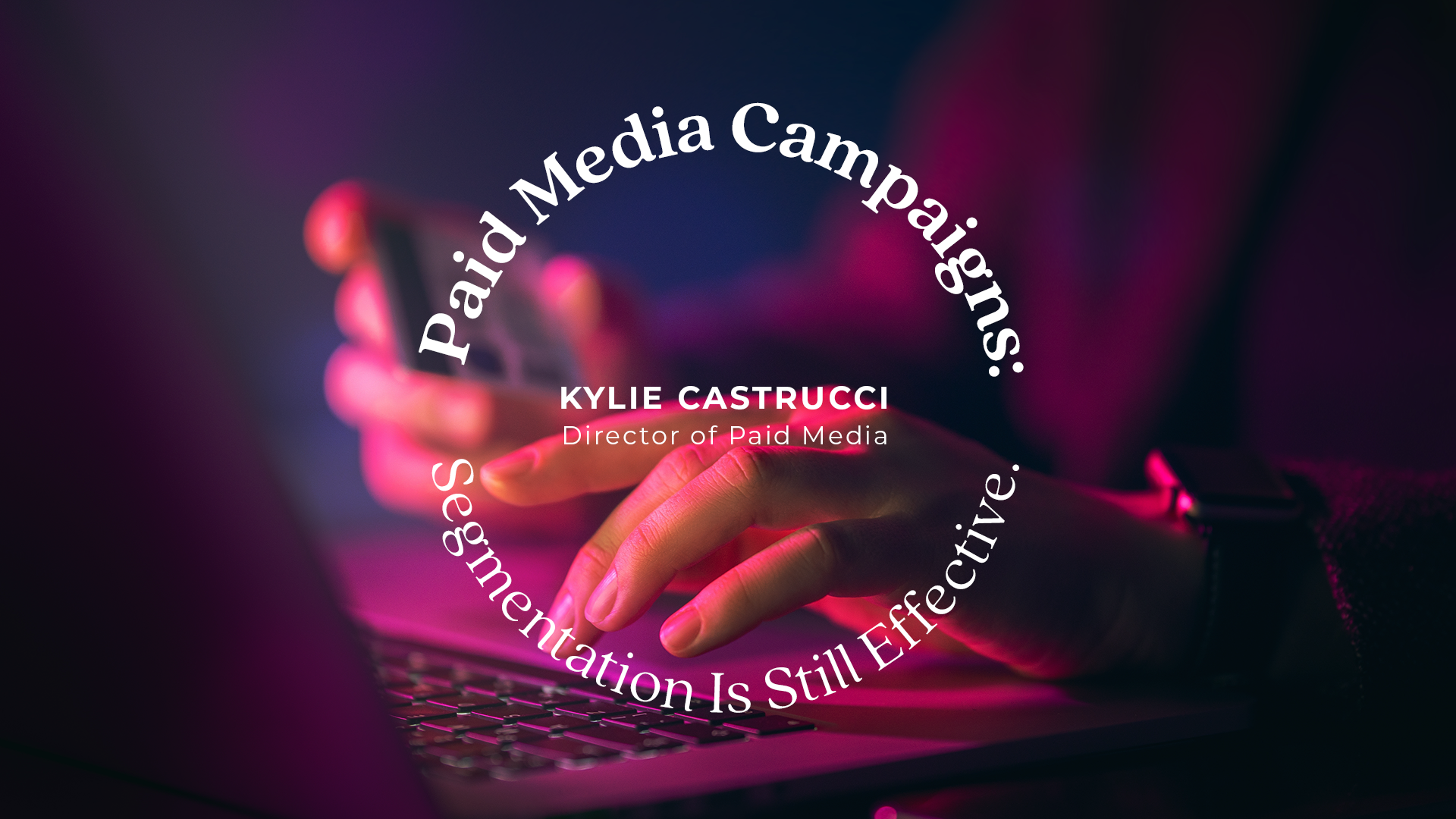
Over the last couple of years, we’ve seen a big push in the Paid Media industry to move to account structures with more consolidated campaigns and fewer audience restrictions. Major advertising platforms have ramped up the narrative that by putting all of your assets in minimal campaigns and forgoing lots of audience targeting, you’ll see the most success. We even wrote a blog that touches on this concept back in July.
While this strategy (sometimes referred to as the “Flywheel” approach) undoubtedly has merit and can add great value to your accounts when applied thoughtfully, we wouldn’t be doing our clients justice if we didn’t talk critically about potential reasons to avoid extremism when adopting this approach. So, before you go restructuring your accounts, let’s discuss some of the ways a consolidated campaign strategy mutually benefits the platforms.
Think about it like this; let’s say your average clicks are $2. If you have two campaigns and each has a budget of $5, then the platform can purchase a total of 4 clicks and spend $8 of your total budget. But if you have one campaign with a $10 budget, the platform can spend all $10 because it can buy 5 clicks. That’s a 20% profit increase for the platform, just because of how you structured your campaigns. Depending on what your average click cost is and how many ways you want to segment your campaigns, using a consolidated campaign structure can result in a substantial profit gain for the platform.
Platforms use the data that they gather through tracking users to help them identify which interest and behavior categories to place users in. When tracking is not available, it’s harder for the platforms to place a user in interest and/or behavior categories. As a consequence, these native targeting options include fewer users than before, limiting the ability to reach people who confidently have interests or exude behaviors that might make them an intended user for a business. If you consolidate your campaigns and loosen targeting, then your spend potential is greater.
This is similar to the item above, in that it revolves around tracking loss. In addition to audience capabilities, data is used to report on performance. Since we are losing the ability to track users, platforms are moving to what is called “predictive data modeling,” where they don’t just report on tangible user actions, but also on what they predict users did based on what similar trackable users did. Inevitably, the more trackable users that a platform has in a sample, the easier it is to predict what non-trackable users may have done. Consolidated campaigns provide the platforms with larger sample sizes so the platforms can confidently report on more predicted “user actions.” Reporting on more user actions means your performance is going to look more inline and possibly even better than it did before we started losing tracking. And, when your data suggests you are performing better, you’re more likely to spend more money.
While there are plenty of reasons to consolidate to a certain level, extreme consolidation could end up being more beneficial for the platform than for your business. The reality is that most brands don’t have unlimited budgets or even large budgets. So, instead of focusing on how to spend more, brands should prioritize spending their available budget in the most secure ways. But what does that mean?
Without an endless budget – or even a budget that exhausts your desired targeted audiences – it’s best to go after the people that you’re confident have interest in or have exuded behaviors that align with possible intention. If I’m a cosmetic brand, I’d rather spend my money on the people who I know have interest in cosmetic products, as opposed to trying to target larger masses whose interests I’m unsure about.
When all of your ads display to all of your audiences, you are forgoing the guarantee that your users will see messages that are tailored to them. Brands should instead make sure they have a campaign structure that allows them to deliver targeted messages to their audiences. For example, if my brand caters to women ages 18-55, the message that would resonate with an 18 year old is going to look very different than the message that would resonate with a 55 year old. On top of that, a message that would resonate with someone who has never been to my website versus a user who has gone to my site and abandoned their cart is also going to be very different. Structuring your campaigns in a way that allows you to deliver the right message at the right time, while remaining consistent across platforms, is really important. Using an over-consolidated campaign structure will not allow you to do that.
With all of that said, segmentation vs. consolidation has a fine line. You want to make sure that your campaigns allow you to have confidence in your targeting and control to provide a strong messaging strategy, while giving platforms enough data density. The minimum conversion threshold for each platform varies, but you want to make sure that you aren’t over segmenting your campaigns and therefore not giving the system enough data to learn from.
In summary, your campaign structure shouldn’t fall in line with the extremes. Don’t over consolidate or over segment your campaigns. Find a balance that will give you control without taking away the benefits that the platform’s algorithms provide.
To ensure that your Paid Media Campaigns are run with an effective campaign structure for your business, reach out to our team of experts at [email protected] and register for our webinar on Developing Full-Funnel Paid & Influencer Campaigns on Wednesday, November 16th.
Written By: Kylie Castrucci, Director of Paid Media